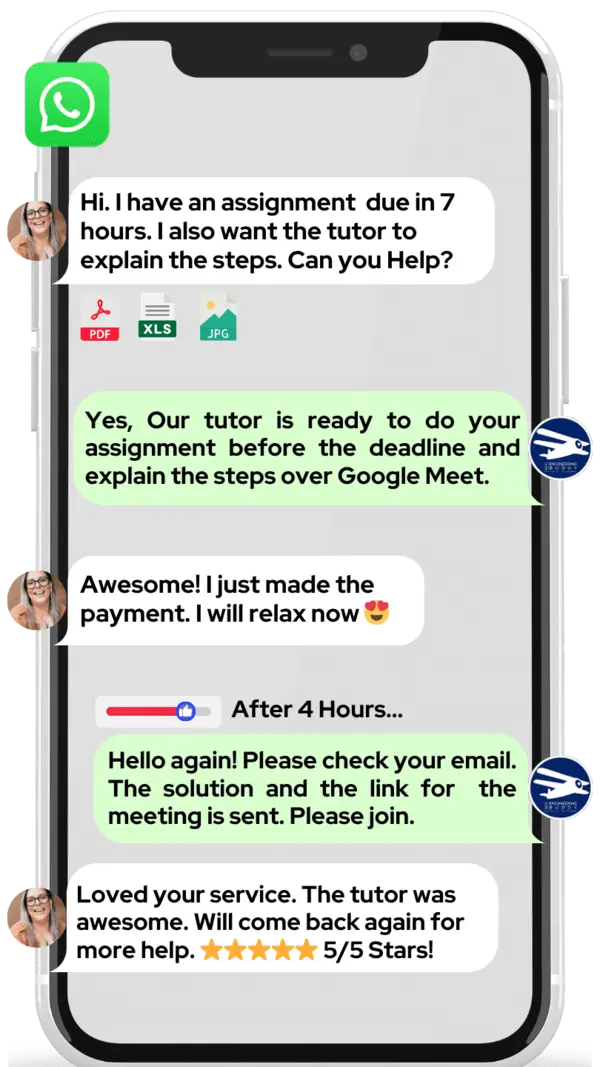

Hire The Best PIC Microcontroller Tutor
Top Tutors, Top Grades. Without The Stress!
10,000+ Happy Students From Various Universities
Choose MEB. Choose Peace Of Mind!
How Much For Private 1:1 Tutoring & Hw Help?
Private 1:1 Tutors Cost $20 – 35 per hour* on average. HW Help cost depends mostly on the effort**.
PIC Microcontroller Online Tutoring & Homework Help
What is PIC Microcontroller?
PIC microcontroller is a family of single‑chip microcontrollers by Microchip Technology. PIC stands for Peripheral Interface Controller. These tiny MCUs (Microcontroller Unit) pack CPU, RAM, flash memory, timers, I/O ports and serial comms into one chip. You’ll find them in washing machines, RC cars, home automation, even DIY robotics kits.
Popular alternative names of PIC Microcontroller: • PIC MCU • PIC chip • PIC micro • Microchip PIC
Major topics in PIC Microcontroller: Understanding Harvard architecture and RISC instruction set; I/O port configuration; timer/counter modules; interrupt handling; ADC (Analog‑to‑Digital Converter) and DAC (Digital‑to‑Analog Converter); serial comms like UART (Universal Asynchronous Receiver/Transmitter), SPI and I2C; PWM (Pulse Width Modulation) for motor control; memory organization (program, data, EEPROM); power‑saving modes; interfacing sensors and actuators; programming in Assembly and C; debugging techniques using MPLAB X IDE and simulation tools.
A brief history of most important events in PIC Microcontroller: 1975 – General Instruments launches the first PIC as peripheral controller for their keyboard project. 1985 – Microchip Technology is founded and acquires the PIC line. 1993 – PIC16C84 appears with EEPROM program memory, enabling in‑circuit reprogramming. 2001 – PIC18 series debuts, adding enhanced instructions and greater speed. 2004 – PIC32 line introduces 32‑bit MIPS cores for high‑performance apps. 2010 – MPLAB X IDE replaces MPLAB 8, unifying development on Java platform. 2018 – Ultra‑low‑power XLP series arrives, powering wearables and IoT devices.
How can MEB help you with PIC Microcontroller?
If you want to learn PIC Microcontroller, we at MEB provide personalized one‑on‑one online PIC Microcontroller tutoring. If you are a school, college or university student and want top grades in your assignments, lab reports, live tests, projects, essays or dissertations, use our 24/7 instant online PIC Microcontroller homework help. We prefer WhatsApp chat, but if you don’t use it, please email us at meb@myengineeringbuddy.com
Although our services are open to every student, most of our learners come from the USA, Canada, UK, Gulf countries, Europe and Australia.
Students reach out to us when subjects get tough, assignments pile up, ideas seem confusing, or they face health or personal challenges. Some have part‑time jobs, miss classes, or find it hard to keep up with the professor’s pace.
If you are a parent and your ward is finding this subject difficult, contact us today and help them ace their exams and homework. They will thank you later!
MEB also offers help in over 1000 other subjects with some of the finest tutors and experts, making learning easier and boosting academic success. Remember, it’s okay to ask for help when you need it so you can enjoy a stress‑free academic life.
DISCLAIMER: OUR SERVICES AIM TO PROVIDE PERSONALIZED ACADEMIC GUIDANCE, HELPING STUDENTS UNDERSTAND CONCEPTS AND IMPROVE SKILLS. MATERIALS PROVIDED ARE FOR REFERENCE AND LEARNING PURPOSES ONLY. MISUSING THEM FOR ACADEMIC DISHONESTY OR VIOLATIONS OF INTEGRITY POLICIES IS STRONGLY DISCOURAGED. READ OUR HONOR CODE AND ACADEMIC INTEGRITY POLICY TO CURB DISHONEST BEHAVIOUR.
What is so special about PIC Microcontroller?
PIC microcontrollers are special because they use a simple instruction set that makes them fast and easy to understand. They need little power and can fit in small devices. Their wide use in industry offers many tutorials and cheap parts. Students find them handy for learning basic electronics and automation. This simplicity helps them stand out among microcontrollers.
Compared to other controllers like AVR or ARM, PIC devices cost less and use less energy. They come in many sizes and features like built‑in timers and analog inputs. On the downside, they have limited memory and fewer ready‑made code libraries. Proprietary programming tools can be pricey, and beginners may see a steeper learning curve than with more popular platforms like Arduino.
What are the career opportunities in PIC Microcontroller?
Many students go on to study embedded systems, robotics, or control engineering after learning PIC microcontrollers. They can take master’s degrees in mechatronics or electronics, or join research projects in smart devices and automation. Workshops and specialized diplomas on Internet of Things (IoT) and Industry 4.0 also build on PIC skills.
Popular job roles include embedded systems engineer, automation engineer, and IoT developer. In these roles, you write code in C or assembly, design and test circuits, and debug real‑time systems. You might work on consumer gadgets, factory controllers, or smart home devices, often in small teams that move quickly from prototype to product.
We study and prepare for tests on PIC microcontrollers to build strong practical skills. This learning helps you understand how hardware and software work together. It also boosts your problem‑solving ability and prepares you for industry certifications that many employers value.
PIC microcontrollers power a wide range of devices—from robots and drones to medical monitors and vehicle sensors. They are low cost, use little power, and have large online communities offering code examples. These traits make them ideal for both learning and real‑world projects.
How to learn PIC Microcontroller?
Start by understanding basic electronics like voltage, current and simple circuits. Install Microchip’s MPLAB X IDE and the XC8 compiler on your computer. Get a beginner PIC development board (for example, PIC16F877A or PIC18F4520) with a compatible programmer. Follow an introductory tutorial to write a blinking LED program: write the code in C, compile it, load it onto the board and test it. Then add one peripheral at a time—timers, ADC, UART—and build small projects (like a temperature sensor or motor control) to reinforce each new concept.
PIC microcontrollers aren’t too hard if you already know basic C programming and electronics. The architecture is straightforward and you can find many example codes online. Learning to set up configuration bits and handle registers may feel tricky at first, but it becomes clear with regular hands‑on practice. Taking it step by step and testing each piece as you go will make the process smooth.
You can definitely learn PIC microcontrollers on your own by using online guides, video tutorials and practice code from forums. If you’re self‑motivated, solo study works well—just be ready to troubleshoot errors and search for answers. A tutor can help you faster by clearing doubts in real time, offering personalized feedback and keeping you accountable, which is great if you prefer structured guidance.
At MEB, we offer 24/7 one‑on‑one online tutoring with experienced instructors who guide you through each concept, help debug your code and review your assignments. We provide custom practice problems, project templates and detailed feedback at every step. Our flexible scheduling and affordable fees mean you get support when you need it, without breaking your budget.
Time needed depends on your background. If you’re new to microcontrollers and C, expect about six to eight weeks of steady study at 5–8 hours per week to build solid skills. With prior C knowledge and electronics experience, you could master the basics in two to three weeks of focused daily practice. Consistency and project‑based learning speed up your progress.
Some top YouTube channels are MicrocontrollersAndMore, GreatScott!, and EdFlix. Educational sites to explore include microchip.com, learnembedded.com, allaboutcircuits.com and tutlance.com. Books many students use are Harley Hahn’s Programming and Customizing the PIC Microcontroller, Muhammad Ali Mazidi’s PIC Microcontroller and Embedded Systems, and Dogan Ibrahim’s PIC Basic Star Tutorial. Check forums like electronics.stackexchange.com and Reddit’s r/embedded. Use MPLAB X IDE examples and GitHub code for hands‑on practice. Visit CircuitDigest.com tutorials, Hackster.io PIC projects, and the “PIC Microcontroller Tutorials” playlist by RazorC for more guides on C language, peripheral setup, interrupt handling and real‑world designs.
College students, parents, tutors from USA, Canada, UK, Gulf etc: if you need a helping hand—be it online 1:1 24/7 tutoring or assignment support—our tutors at MEB can help at an affordable fee.










